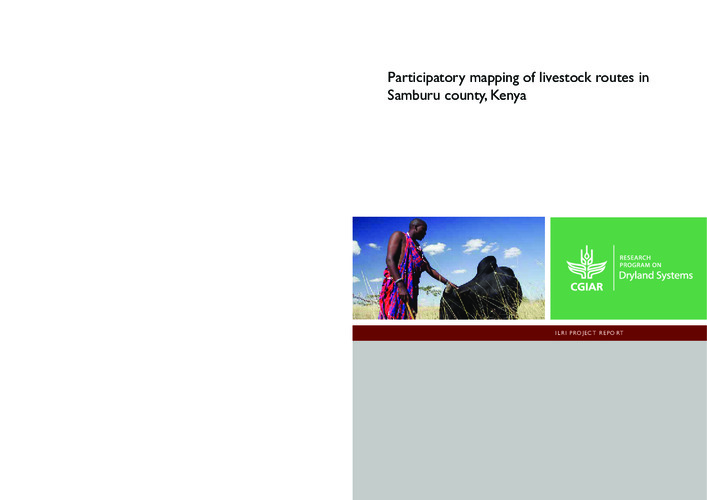Participatory mapping of livestock routes in Samburu county, Kenya
Abstract
In November 2014, a workshop was held in Samburu, Kenya, to carry out an exercise on participatory mapping
of livestock routes in the county. This workshop attracted 54 participants representing different stakeholders
including Livestock Market Association members (LMA), area chiefs, District Livestock Production Officers (DLPO),
District Water Officers and District Livestock Marketing Council and Kenya Rural Development Program (KRDP)
and Northern Rangeland trust (See annex 1 for list of participants). The participants were mobilized by Samburu
Integrated Development Program (SIDEP).
The exercise was part of interventions by a project implemented by the International Livestock Research Institute
(ILRI) in collaboration with SNV- Netherlands Development Organization and the Kenya Livestock Marketing Council
(KLMC), and funded by the European Union and the government of Kenya under the Kenya Rural Development
Programme (KRDP). The three year project on ‘Enhanced community resilience to drought through innovative market
based systems approaches’ is implemented in six counties of Baringo, Isiolo, Wajir, Marsabit, Samburu and Tana River.
The project’s objective is to promote pastoral livelihoods diversification, facilitate robust markets for livestock and
livestock products, and enhance consolidation of knowledge base to enhance climate change adaptation and market
orientation.
Giving the opening remarks during the workshop, the county drought coordinatorof Samburu emphasized the
importance of livestock mapping to the county and other stakeholders for planning purposes and called for a
validation/dissemination forum after the completion of the exercise. Water and pasture related conflict and insecurity
have been rampant in Samburu county and he urged the participants to play an active role in ensuring reduction of the
same so as not to scare the participants.
The project’s Monitoring and Evaluation (M & E) officer gave an overview of the project, and highlighted its result
areas which include a strong Arid and Semi-Arid Land (ASAL) knowledge base that would enhance pastoralist ability
to manage climate risk among others. Thus, the mapping exercise directly contributed to this key result area (see
project’s online space here: http://asals-markets.wikispaces.com/).
The mode of delivery in the workshop included a mix of models key among them being use of presentations and
brainstorming sessions among the participants as well as focus group discussions for groups with similar interests

